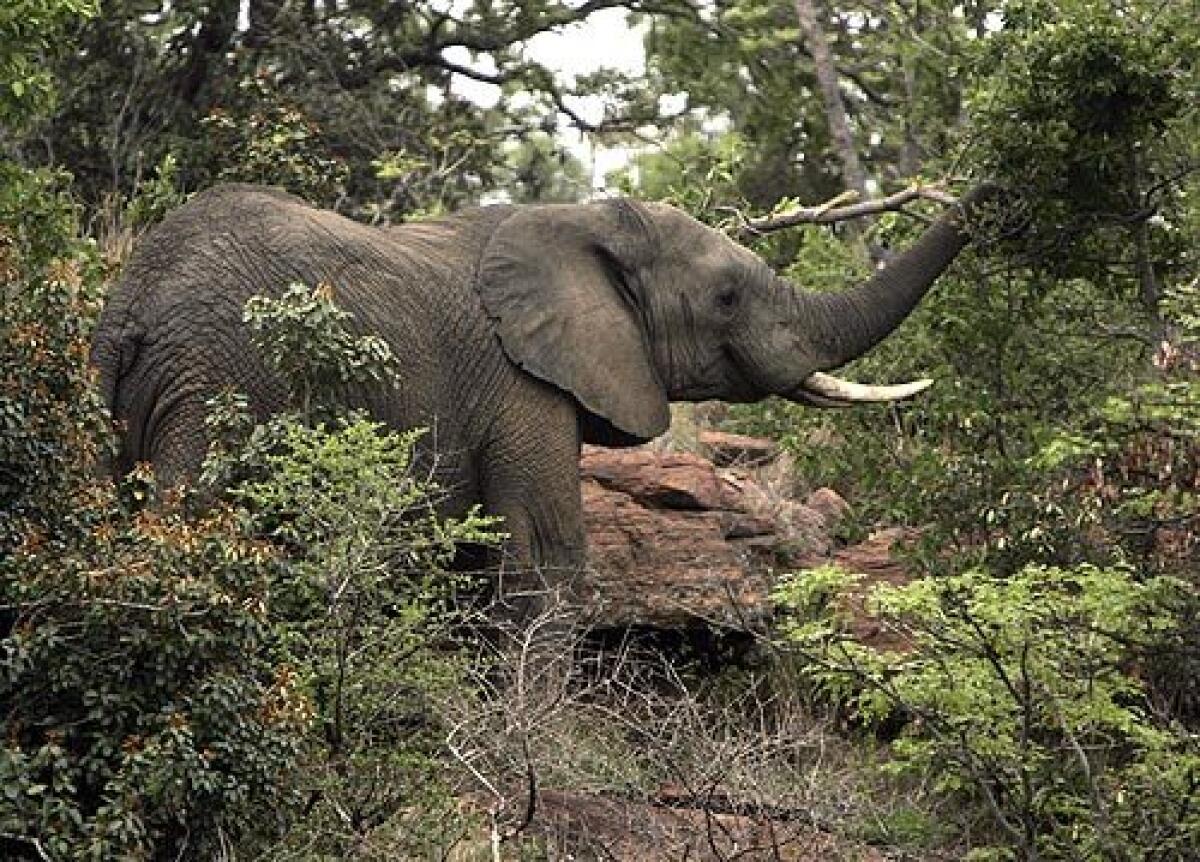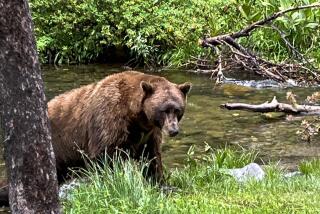Nuclear fallout drops the bomb on ivory poachers

The atomic bomb blasts of the Cold War may help put poachers of elephant tusks and rhinoceros horns in jail.
Faint traces of elements created when nuclear bombs were exploded above ground from the late 1940s to 1963 have worked their way up the food chain into the bones, teeth, tusks and hair of animals whose remains are now illegal to trade.
Measuring these isotopes and their chemical cousins can pinpoint the age of traded pelts and tusks to within an accuracy of about four to 16 months, according to University of Utah geochemist Thure Cerling, lead author of a study published Monday in the Proceedings of the National Academy of Sciences.
Dating fossils, plants and animals by measuring isotope ratios is hardly new to science. But it has been an unwieldy tool, often yielding high degrees of uncertainty while damaging valuable samples. Cerling and his team took the technique of measuring carbon-14 isotopes to a new level of accuracy, and cleared up some confusion about dating species from different parts of the globe, where fallout may have taken some time to settle.
“Most of the original nuclear weapons testing was done in the U.S. and the Soviet Union at about latitude 40 to 60 degrees north,” Cerling said. “It took about a year and a half to two years to mix all that carbon 14 across the equator.”
Cerling and conservation groups such as Save the Elephants hope the refined techniques can be used in criminal proceedings against people caught selling products from animals protected by the Convention on the International Trade in Endangered Species (CITES), which has banned the trade of numerous byproducts of imperiled animals and plants.
The method, for instance, could identify whether ivory came from an animal killed before the species was added to the list, Cerling said.
“Different animals come on the list at different times,” Cerling said. “The elephant came on the list in 1989. If an animal died after 1989, then it’s when animals were on the CITES list. If it’s pre-1989, then it’s legal to have it but not to sell it.”
Carbon-14 is created by a chemical interaction between nitrogen and a free neutron. The process can be set in motion by cosmic rays, but also by nuclear fission, such as an atom bomb explosion.
The isotope becomes part of the natural carbon cycle - joining with oxygen in the atmosphere to create carbon dioxide, which then enters the ocean or is taken up by plants through photosynthesis. From there, it’s a matter of living things eating other living things, with the isotope along for the ride. It can be found in tree rings, some animal tissue, collagen in bones, and minerals in fossils.
Cerling and his team used accelerator mass spectrometry on 29 samples isolated from bone, hair, skin and plant fibers. They were essentially able to re-calibrate curves used to date animal and plant specimens by juxtaposing their analysis results with samples of known age.
Cerling came to the field of animal forensics by chance, after studying human evolution in Africa for decades. That interest drew him to animal forensics as a way to chronicle the movement of animal species associated with his studies. Eventually, Cerling teamed up with wildlife agencies in Kenya and with the international conservation group Save the Elephants, both of which helped in the study.
“The illegal trade of not only ivory, but other animals, is many billions of dollars a year,” Cerling said. “This is estimated to be a gigantic business. And it is a business to many people.”
When Cerling first began helping wildlife officials with basic forensics a decade ago, trade in ivory had abated, largely due to high-profile campaigns. But new prosperity in Asia, particularly China and Vietnam, has spurred the trade again.
A recent United Nations Environmental Program report chronicled a doubling of large-scale seizures (more than 1,700 pounds) of ivory destined for Asia since 2009. About 17,000 elephants were killed in 2011, according to the report.
“There’s a lot of upward mobility, and that’s one way of demonstrating wealth, is to have this material,” Cerling said. “In those countries, it’s still quite socially acceptable. When there’s a market, someone will supply you with the goods.”
Nuclear fallout has been used in many other scientific fields. Isotopes associated with the Fukushima nuclear power plant accident in Japan have been used to track migratory patterns of tuna, for example. And neurobiologists recently examined brains of people who lived during the nuclear testing era to answer questions about whether adults can grow new neurons in the hippocampus.
Stanford University marine biologist Dan Madigan, who analyzed the Fukushima fallout in tuna, called Cerling’s work “an interesting study and clever application of the pulse of carbon-14 into the environment.”
The study’s publication Monday could have important legal ramifications. Criminal cases have come to rely on the “Daubert standard,” a set of practices on the admissibility of expert testimony derived from a 1993 lawsuit, Daubert vs. Merrell Dow Pharmaceuticals. In part, it holds that scientific knowledge must be soundly based on scientific method, often through publication in a reputable, peer-reviewed journal.
“This was to demonstrate how accurate you can be,” Cerling said.







